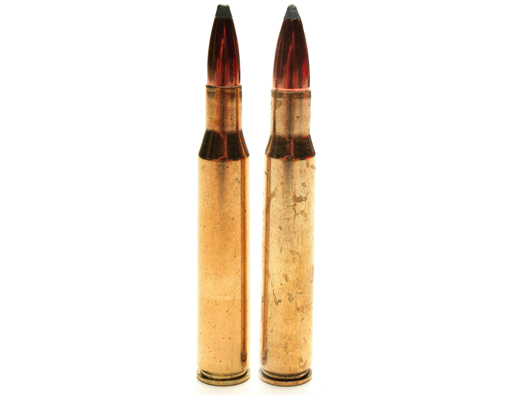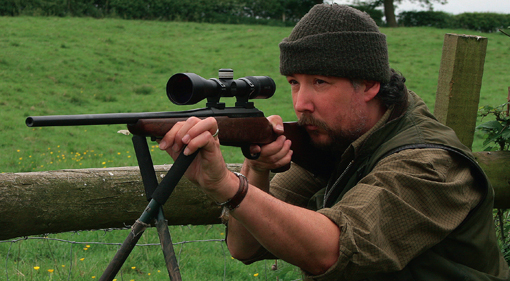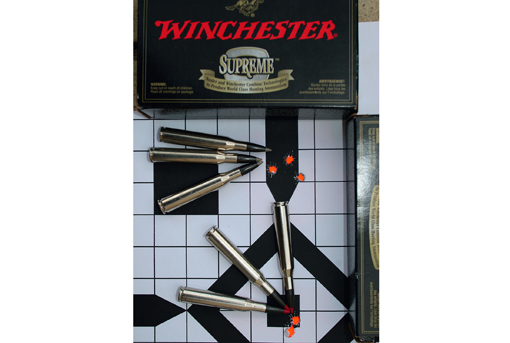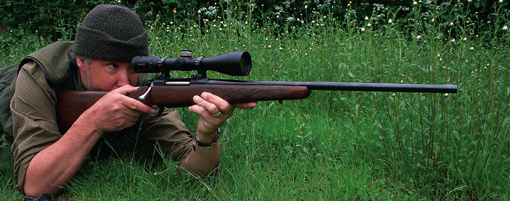Win CENS ProFlex DX5 earplugs worth £1,149 – enter here
Winchester .270 cartridge review
Ammo reviews: Winchester .270 cartridge: Calibres come in and out of fashion in the fickle world of ballistics, but with the right bullet, the .270 will give you more than retro chic.

Winchester .270 cartridge.
These days, rifle calibres and cartridges quickly wax and wane in shooters? affections. Normally this is not based on superior ballistics but because it?s simply the latest thing.
One old cartridge that rose to meteoric fame only to fall quickly into disfavour is the .270 Winchester round.
The .270 could be described as a ?Marmite cartridge?, in that generally people either love it or hate it, but its true value lies somewhere in between and any shortcomings are due to the wrong bullets being used.
The .270 could also be described as a ?non-magnum magnum? cartridge, as it gives a magnum performance without the belted case design.
In 1925, when the cartridge was first developed by Winchester, it was designed to shoot a 130-grain bullet at about 3,100fps to provide a flat trajectory and superior terminal ballistics.
This, in time, has proved a double-edged sword, as its detractors have always complained about excessive venison damage, whereas its promoters relish the .270?s ability to deliver a humane kill at all standard deer stalking ranges.
The famous design is based on altering the .30-06 parent case.
The .270 is a necked-down .30-06 with an overall length of 3.34in. It has a longer neck to accommodate the slender .277 calibre bullet. The case capacity from its 2.54in length is about 60 grains of powder, meaning that 130- and 150-grain bullets can be fired at 3,100fps and 2,850fps respectively.

In 1925, a velocity of more than 3,000fps with a 130-grain bullet was highly attractive, hence the catridge?s initial popularity.
Today, however, there is a wider choice of bullet weights and construction, and bullet design is more tailored to specific needs.
BULLET TYPES
Though the 130-grain bullet weight has become synonymous with the .270 Winchester, lighter or heavier bullets can increase the uses for this cartridge.
In fact, weights from 90 grains for vermin and fox control all the way up to 180 grains for larger deer species can be sourced easily for the reloader.
Furthermore, as the Winchester .270 is chambered in all the major rifle producers, there is plentiful factory ammunition as well. So the old .270 can become quite a versatile rifle if you think laterally and don?t pigeonhole it as a deer rifle.
Bullets with weights from 90 to 110 grains from Speer, Sierra or Hornady are soft point or hollow point and designed to expand rapidly on vermin and fox-sized game.
Barnes makes a 110-grain solid copper and polymer-tipped bullet named the Tipped TSX, which is designed to penetrate and expand on game larger than foxes. Nosler produces a very good AccuBond 110-grain bullet of bonded core construction, which produces similar results to the Barnes on game.
With a load of 52.75 grains of Hodgdon H4895 from a 24in barrel, a 90-grain Sierra hollow point bullet can be pushed at 3,460fps velocity and produces 2,393ft/lb energy.
The 110-grain bullets travel at a respectable 3,257fps with 61 grains of Reloder RL19 powder. At these speeds, a Hornady V-Max bullet is excellent for foxes and the Nosler AccuBond good for deer.
Next up are the 130-grain bullets, though Barnes also makes 120-grain XFB bullets. The 130s zip along at between 2,900fps and 3,100fps, depending on the powder used.
From a 24in barrel and with a load of 54.5 grains of Hodgdon H4350 powder, the test rifle produced 3,038fps with a 130-grain Nosler Ballistic Tip. If you want a bullet that expands less, then switch to a Nosler Partition with the same load or switch to a Barnes TSX or AccuBond.
Hornady Interbonds or SST bullets also perform well and Sierra?s flat-base soft point Prohunter or Boat-tail Game King bullets always give a good performance in the field.
A great weight for the .270 is the 140-grain bullet. Of these, the Nosler AccuBond and Barnes Triple Shock 140-grain bullets perform admirably. You can achieve a velocity of 2,923fps with a load of 53.5 grains of IMR 4831 powder, which gives a healthy 2,657ft/lb energy.
This load gives a reasonably flat trajectory with a more controlled expanding bullet better designed for deer use.
The venerable 150-grain bullets are next and can achieve 2,850fps if loaded carefully with 56 grains of Reloder RL22 powder. A reduced load of 50 grains of Hodgdon H4350 produces 2,644fps with good accuracy, performance on game and lighter recoil.
BULLET CHOICE IS PARAMOUNT
Nosler Partitions work well but are sometimes not as accurate as they might be. Nosler?s Ballistic Tips have excellent terminal ballistics, but the 150-grain Sierra Game King or the Hornady SST expand less violently.
Either you end up with a bullet that deposits all its energy into the body cavity, risking meat damage, or you have more controlled bullet expansion that requires more precise bullet placement from the stalker.
For British deer, you would normally stop at 150 grains, but 160- and180-grain bullets are available and can achieve 2,750fps and 2,500fps respectively. These can be used for larger deer species or even wild boar.
FIELD TEST
I used an old Parker Hale 1200 and Tikka T3 Deluxe rifle for ballistic testing and accuracy in the field with both reloads and a small quantity of factory ammunition.
The .270 Winchester is no more accurate than any other cartridge, and its accuracy depends on its suitability to the ammunition you feed it.
For example, with the old Parker Hale, Remington 130-grain AccuTip loads produced 2,989fps and 2,580ft/lb energy, and grouped three shots in 1.5in.
Winchester makes a 130-grain Ballistic Silver Tip in its Supreme range. It shot 1in groups with both rifles and achieved an average of 3,051fps velocity and 2,688ft/lb energy. It is a nice load that will shoot flat and drop any deer humanely.
Better still were the Winchester 140-grain Accubond factory loads. In the Tikka T3, they made less than 0.75in groups, with an average velocity of 2,975fps and 2,752ft/lb energy, and a good down-range performance.
DOWN-RANGE PERFORMANCE
If you take a 110-grain Barnes TSX bullet travelling at 3,250fps and zeroed at 100 yards, you are only 0.5in low at 50 yards, 2in low at 200 yards and 8.9in low at 300 yards, which is good for foxes or deer.
From a 100-yard zero, the 130-grain bullets, which were typically a Nosler Ballistic Tip travelling at 3,038fps, dropped 2.4in at 200 yards and 9.8in at 300 yards. This was good when you consider most deer are taken within 200 yards.
Zeroed at 100 yards, the 140-grain bullets travelling at 2,923fps were 2.7in low at 200 yards and 10.5in low at 300 yards.
Similarly, a 10mph wind produced a drift of only 1.5in at 100 yards and 5.9in at 200 yards.
For those who like a slower and less destructive bullet, a 150-grain Sierra Game King with a velocity of 2,850fps might suit you better. The drop of 3in at 200 yards is only slightly more than the 130-grain, at 300 yards it was 11.6in low.
CONCLUSION
I feel a bit sorry for the .270 cartridge, as it was built up to be the bee?s knees only to be dethroned due to the use of incorrect bullets or smaller, more efficient cartridges.
It?s a very good cartridge, and when loaded properly with a bullet that is designed to perform to your own specification, it will not disappoint.
The question is – do you have the skill to shoot it accurately in the first place?
I have never had a problem with recoil, and of course the design of the rifle plays a part, though there is no denying the .270?s bark can induce a flinch to the uninitiated.
With many good .270s languishing on gunsmiths? shelves at good prices, the prudent shooter can pick up a bargain and benefit from the performance this cartridge was so rightly praised for.
Read more ammo reviews!
Related Articles
Get the latest news delivered direct to your door
Subscribe to Shooting Times & Country
Discover the ultimate companion for field sports enthusiasts with Shooting Times & Country Magazine, the UK’s leading weekly publication that has been at the forefront of shooting culture since 1882. Subscribers gain access to expert tips, comprehensive gear reviews, seasonal advice and a vibrant community of like-minded shooters.
Save on shop price when you subscribe with weekly issues featuring in-depth articles on gundog training, exclusive member offers and access to the digital back issue library. A Shooting Times & Country subscription is more than a magazine, don’t just read about the countryside; immerse yourself in its most authoritative and engaging publication.










